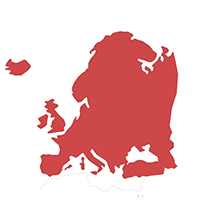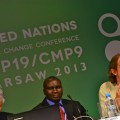Some Greenpeace Arctic 30 Activists Released on Bail
admin | November 20, 2013.
Nine of the ‘Arctic 30’ Greenpeace activists were granted bail by the Russian court. The Arctic 30 campaign has been ongoing since late September has become a public spectacle, and has even made appearances at the climate negotiations happening in Poland.
The hearings currently being held in St Petersburg are a testament to the power of Greenpeace as an organisation. Bail-out payments have been set high at $61,500 per person.The 30 activists were on a campaign in the Russian Arctic and were attempting to board a Russia oil platform to hang a sign from it. The organisation expressed that the team was to: “peacefully protest against the Arctic oil rush, which threatens grave harm to the Arctic environment.”
On September 18th the 30 activists disembarked the Arctic Sunrise and attempted to climb the Gazprom oil platform. The Russian Coast guard was quick to act and sent masked agents to the scene and threatened them into arrest with guns and knifes.
As Arctic ice continues to melt and leave the area ice-free for longer during the warmer months, northern countries including Russia, the United States and Canada are worringly enthused about the potential economic benefits of an ice-free Arctic.
Tough economic times, but perhaps also sheer greed, have led to countries wanting to explore the Arctic for its resources and possible trade routes. Yet, the recent release of the fifth assessment report by the IPCC warns the world that oil exploration has to come to an end if the planet is to remain under 2°C of warming. Exploration within the Arctic is especially detrimental, as the area has not been subjected to pollution and development and remains a fragile environment. Increased traffic within the region due to oil and shipping companies will only continue to vandalise these ecosystems. This is why Greenpeace continues to fight.
Greenpeace is no stranger to performing such extravagant and daring expeditions; this very Monday during the International Coal and Climate Summit, Greenpeace activists were seen on top of the Polish Ministry of the Economy protesting against the proceedings inside.
As climate change continues to have a devastating impact globally, it should be expected that there will be more examples of non-violent direct action.
Greenpeace’s more radical approach to climate activism compliments the more formal UNFCCC process. They both need one another, even if only indirectly. Radical activists provide the energy, urgency and pressure needed to push formal negotiations further; whilst governments need a more formal framework for changes to be implemented and monitored.
Greenpeace is considered to be an environmental giant, and their capacity, skills and resources to execute these political and public campaigns will see them continue as a spokesperson for the planet.
By Andrew Johnson, photos by Laura Owsianka and Greenpeace.













comment